Join More Than 50,000+ Subscribers and get latest camera news and rumors
NEW CAMERA VIDEOS ON YOUTUBE
|
By admin, on November 10th, 2021
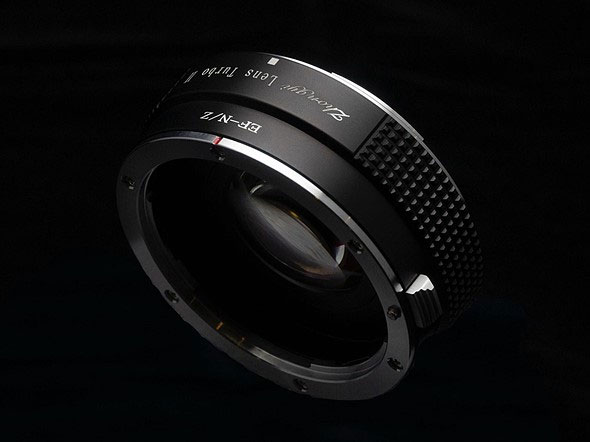
Finally, Zhong Yi Optics announced a speed booster (they are calling it Turbo Adapters) for Nikon mirrorless cameras. You can use this speed booster on the Nikon z50 camera as well as the Nikon z FC camera. They have announced three of them. So, now you can use your F-Mount lens as well as EF Lenses with DX Mirrorless cameras, the third one is for Mount42 (The M42 lens mount is a screw thread mounting standard for attaching lenses to 35 mm cameras, primarily single-lens reflex models. source wikipedia)
Now the big question is what the speed booster will do to your camera what new features will be present inside the speed booster
- One of the most important things is that it reduces the crop factor, so you can easily use your Nikon f Mount lenses with a DX mirrorless camera system without facing any crop. That’s great news.
Now I read it very clearly since it’s one of the most important features of any Speed booster that you will use in your DX mirrorless camera
- With the help of a new speed booster, you will get a clear one-stop aperture advantage with the lens you are using.
For example, you are using a 50mm 1.8 of mount lens in your DX mirrorless camera. While using the 50mm f 1.8 lens you will not face any 1.5 X crop factor. So, you will have a bit wider coverage and your camera will act as a full-frame camera since more light is getting into the sensor with the help of a speed booster. And not only that the resulting aperture will be reduced to f 1.4 to 1.2.
The only big issue is the speed booster doesn’t have AF contact pins, which means you will not able to use the autofocusing mechanism of your lens while using this speed booster. So you can work with the old age manual f Mount lenses very effectively year but unfortunately, the autofocusing mechanism will not work with the latest lenses.
Get Zhong Yi Optics Turbo Adapters for Nikon DX Mirrorless from B&H Store | Amazon.com
By admin, on November 9th, 2021
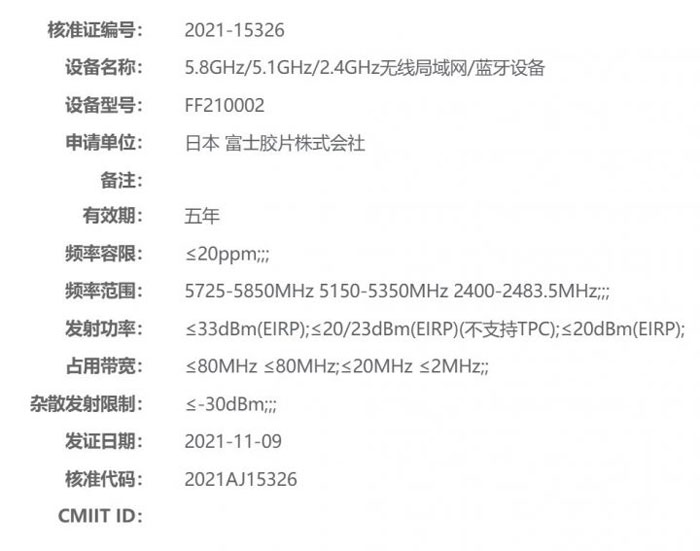
Nokishita spotted a new camera at a wireless certification agency, most probably the camera is Fuji X-H2 Camera. Take a look at the details below,
Fujifilm’s unreleased digital camera “FF210002” has been registered with an overseas certification body. Equipped with Wi-Fi (2.4GHz / 5GHz) and Bluetooth
Most probably we will see the new Fuji X-H2 in 2022. We will publish more details as we get any.
Follow us on our social pages FACEBOOK | TWITTER | INSTAGRAM, –> See More Fuji Rumors Or subscribe us via Email or Push Notification You Can also Download our Android App
By admin, on November 5th, 2021
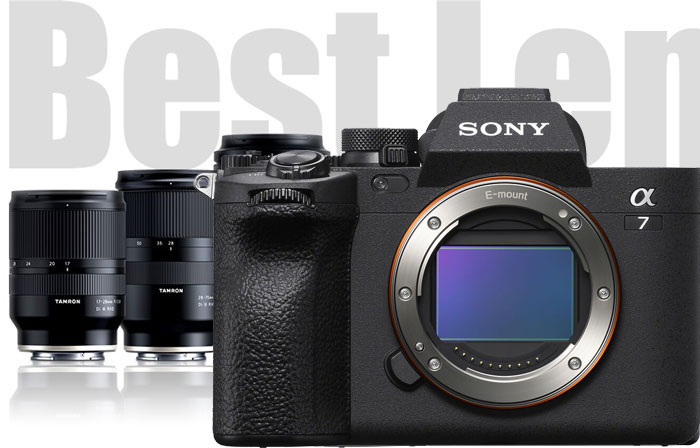
Best Lenses for Sony A7 IV Camera discussed here, we have discussed some of the best lenses for Sony A7 IV Camera. Which includes zoom lenses, best prime lenses as well as best zoom lenses. If you still have any questions related to Sony A7 IV Camera’s best lenses feel free to ask in the comment box.
What are the Best Budget Lenses for Sony A7 IV 2024
Here is the list of the best lenses for the Sony A7 IV camera for the year 2024. These lenses are ideal for wedding photography, sports, wildlife, and even for content creation on YouTube. All the lenses are divided into different groups. Some of these lenses are budget-friendly, and some are the best ones that your money can buy. So, here is the list of the best lenses for the Sony A7 IV.
| 1. |
Tamron 28-75mm F2.8 RXD |
- Budget Friendly
- Developed for A74
- Lightweight
- Useful Focual Length
- Dust Resistant
|
Buy this lens from Amazon | B&H |
| 2. |
Tamron 28-200mm RXD |
- Versatile Zoom
- Value for Money
- Little Vignetting
- Incredibly Sharp
|
Buy lens from Amazon | B&H Sore |
| 3. |
Sigma 100-400mm Lens |
- Precise AF
- Extremely Reliable
- Expert In Low-light Conditions
- Extremely Sharp
|
Buy this lens from B&H and Amazon |
| 4. |
Tamron 17-28mm RXD |
- Razer Sharp
- Lightweight
- Useful Focal Length
- Dust Resistant
|
But this lens from Amazon | B&H Store |
| 5. |
Sony 85mm F1.8 |
- Beautiful Bokeh
- Great Value
- Dust Resistant
|
Buy this lens from Amazon | B&H Store |
|
|
|
|
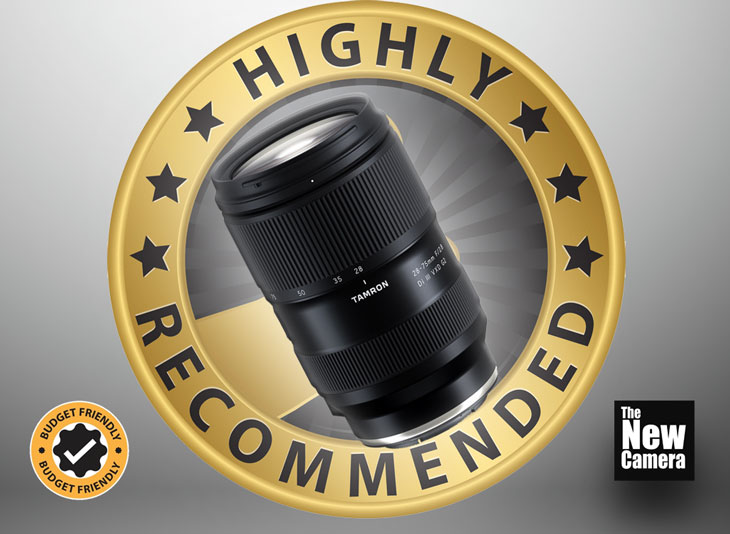
Buy this lens from Amazon | B&H
1. Tamron 28-75mm F2.8 Di III VXD G2 Lens for Sony E
Best Tamron Lens for Sony A7 IV Camera. The new G2 lens features excellent sharpness throughout the zoom range, the corner sharpness also improved compared to the older RXD version. We highly recommend you to get this lens if you have already purchased the Sony A7 IV Camera that features a 33MP sensor which would of course need better optics to resolve the higher MP count perfectly.
The lens comes in a compact size and weight, and it offers the quality and sharpness of prime lenses. As I have mentioned above Tamron engineers updated the optics of the lens. So, you will be
The build quality is very solid and feels very comfortable in hand even if you are shooting up weddings or events for long hours. With consistent F2.8 aperture, you get amazing low-light performance and perfect portrait shots at 50-75mm.
Usage: Wedding Photographers, Event Shooters, or those who are looking for a perfect general-purpose lens under budget
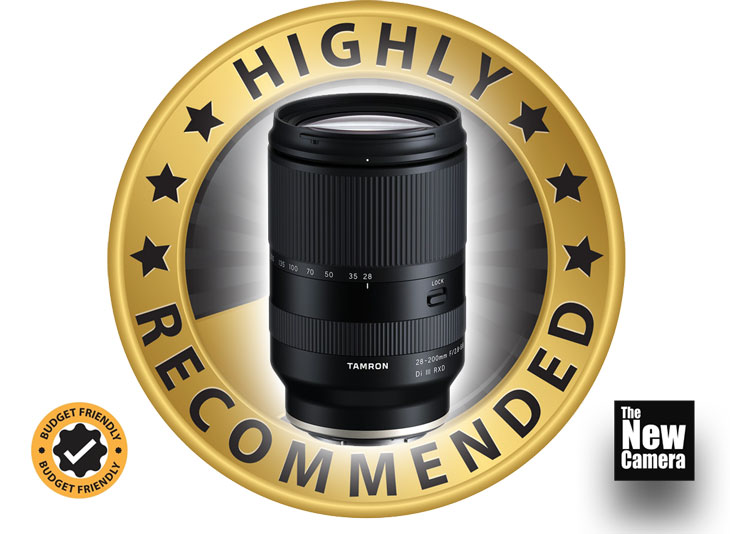
Buy 28-200mm lens from Amazon | B&H Sore
2. Tamron 28-200mm f/2.8-5.6 Di III RXD
The best Zoom Lens for Travel photographers is Tamron 28-200mm f/2.8-5.6 Di III RXD. This lens is one of the best wide-angle zoom lenses for the Sony A7 IV camera. The lens captures the highest amount of details possible and gives amazing coverage
The overall design of the Tamron 28-200mm f/2.8-5.6 Di III RXD is very compact and very easy to carry and the lens is also lightweight ( 575.5 g). Whether for portrait or landscape, this lens does a very good job, clean and sharp images.
The Tamron 28-200mm f/2.8-5.6 Di III RXD features a stepping drive motor and the autofocus motors deliver very fast precise and quick focusing performance for both still and video work. This lens is an excellent alternative to the Sony 24 to 240 F3.5-5.6 lens, amazingly compact size and lightweight and overall the price of this lens is also affordable.
Usage: Travel Photographers, those who are looking for a perfect all-in-one zoom lens.
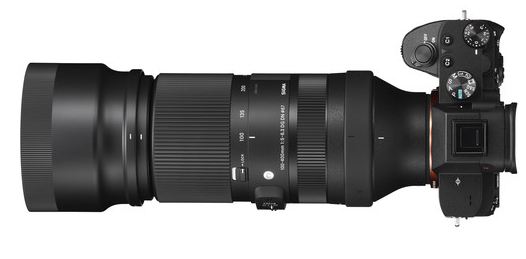
Buy the Simga 100-400 MM Lens from B&H and Amazon
3. Sigma 100-400mm f/5-6.3 DG DN OS Contemporary Lens for Sony E
Best wildlife Sports Zoom Lens for Sony A7 IV Camera. If you don’t want to spend $1500 or more on the Sony version of the same lens and you want almost the same image quality and AF speed then go with the Sigma 100-400mm Lens. Sigma has the nicer color, contrast, and bokeh. A great, affordable way to get into Wildlife and Nature photography.
The color and contrast ratio of the Sigma 100-400mm lens is just amazing. Throughout the focal length, the sharpness is very well maintained and it delivers excellent compression of a scene or enough zoom to bring a faraway subject into closer view.
one of the best part of this lens is its performance at the price we are getting. So, if you are looking for a budget wildlife photography lens then the Sigma 100-400mm lens is made up for you.
Usage: For budget Wildlife and Sports shooter
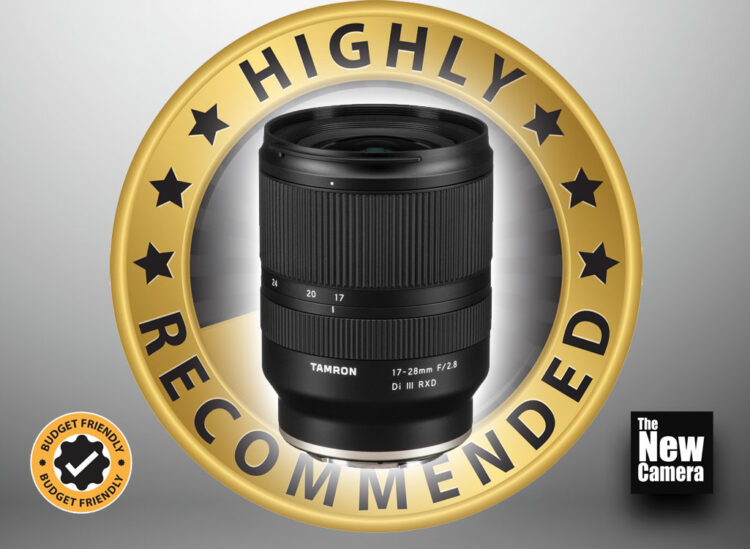
But this lens from Amazon | B&H Store
4. Tamron 17-28mm f/2.8 Di III RXD
Tamron 17-28mm f/2.8 Di III RXD Lens is the best budget lens for office, room, and hand-held vlogs. perfect wide-angle zoom lens with a 2.8 constant aperture. The sharpness of this lens very impressive and the new stepping drive motor inside this does AF Fast so without any lag even. You can easily use this budget-friendly high-quality lens for office and room vlogs and photographers can use this lens for landscapes, cityscapes, architecture photography, and also for street photography. The lens is also weather-sealed so you don’t have to worry while you are using this dusty or moist condition.
We highly recommend you to get the Tamron 17-28mm f/2.8 Di III RXD Lens if you are looking for a budget-friendly high-quality ultra wide-Zoom Lens for your Sony A7 IV Camera.
Usage: Handheld-Vlogging, the Best Lens for Content Creation, Architecture, and Landscape photography.
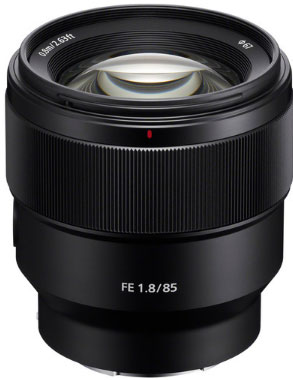
Buy Sony 85mm lens from Amazon | B&H Store
5. Sony 85 mm f 1.8
Sony 85mm f 1.8 lens is the best portrait lens for Sony A7 IV camera. Undoubtedly the Sony 85mm is one of the most popular lenses among wedding photographers those who love to create beautiful backgrounds or perfect cinematic portrait images. The lens is also highly useful when you want to create videos with Creamy me background blur. The lens features a stepping drive motor and the autofocus mechanism of this lens work amazingly fast when paired with the Sony a7 iv camera. Additionally, a rounded seven-blade diaphragm is featured to render out-of-focus highlights with a smooth, circular appearance. Characterized by its straightforward design, this go-to lens balances both ease of handling along with enhanced image quality. It is an inexpensive lens if you compare its price with the features you are getting, but you get a bit more than what you pay for.

Buy Sony F20mm F1.8 from Amazon and B&H Store
5. Sony FE 20mm F1.8
Sony F20mm F1.8 is the best Gmaster lens for a Sony A7 IV camera. A good prime lens for landscapes, travel and documentary photography, and interiors and architectural photography.
Sony 20mm f 1.8 g master lens is one of the best lenses if you want to create high-quality landscapes canvas, travel and documentary photography, and interiors and architectural photography.
The lens is also extremely useful for street photography, the 20mm focal length is all you need for a classic street shot and the lens delivers pixel to pixel level details even when used at its MAX F2.8 aperture.
The weight of the lens is only 373 grams and the less is very compact in size which makes it highly suitable for handheld videography as well as photography. Due to the nature of optical design inside the lens delivers amazingly sharp images and videos, as well as the background color it creates, which is very smooth and creamy.
Sony A7 IV Best accessories
We have selected some of the best accessories for the Sony A7 IV Camera. Take a look and so share your thoughts with us.
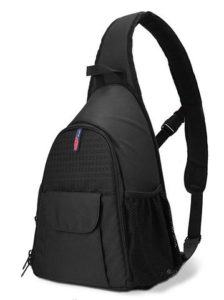
Buy this Waterproof Camera Bag from Amazon
1. Best Sony A7 IV Camera Bag (Waterproof Hardshell Case)
We have selected one of the best Sony A7IV camera bags available right now. This camera bag has received one of the highest ratings at Amazon from its consumer as well as not on the highly-rated this bag is highly usable too for travel purposes. With the Sony A7 IV best camera bag you will not only get a space for lenses you will get additional space for its accessories, such as flashes or battery packs. I personally recommend you to get this camera back for your sony A7 4 camera.
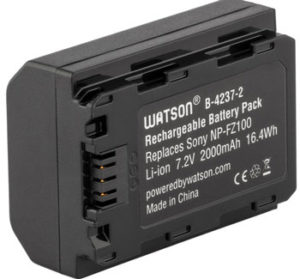
Buy Watson battery for Sony A7 IV Camera from Amazon | B&H
2. Best Battery for Sony A7 IV Camera
Watson is one of the best battery makers of the Sony Alpha series camera, they make very affordable and usable best batteries for Sony A7IV too. At a little more than half the price of Sony’s battery, it holds a charge just about as long as the original.
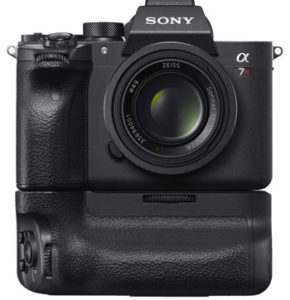
Buy this vertical Grip from Amazon | B&H Store
3. Sony VG-C4EM Vertical Grip
Best battery grip for Sony A7 IV camera. If your portrait photographer then this is a must-have accessory for you. Otherwise, if you need more backup then this is highly usable. With this battery grip, you can use to battery cell simultaneously. So either you can buy Sony original batteries or you can also my the Watson batteries that I have mentioned above
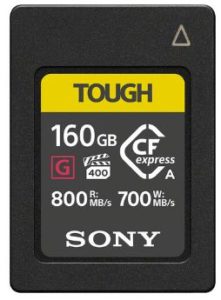
Sony Tough Card from AMazon | B&H Store
4. Sony 160GB CFexpress Type A TOUGH Memory Card
Best CFexpress Memory Card for Sony A7 IV. Sony provides fast read speeds up to 800 MB/s along with write speeds up to 700 MB/s. It’s a perfect card for the Sony A7 IV camera, you can smoothly record 4k 10-bit videos on it. Transfer rates are almost exactly as advertised. Amazing, fast, tough, just a little expensive.
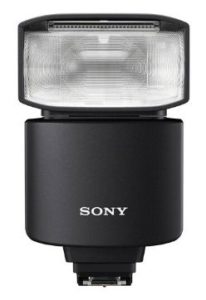
Buy Sony flash from Amazon.com | B&H Store
5. Sony HVL-F46RM Wireless Radio Flash
Best Flash for Sony A7 IV Cameram Sony Camera Flash with face detection. If the face of the subject is in the shade the flash and camera will know to increase the exposure to better expose the face. Best flash that works flawlessly in sports mode too. One of the most advanced flashguns sony ever made and is highly recommended for ALpha A7 IV.
By admin, on November 5th, 2021
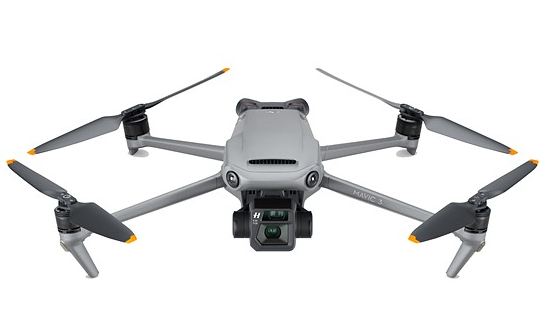
DJI Mavic 3 and Mavic 3 Cine both drones are announced, The main imaging difference between the Mavic 3 and Mavic 3 Cine models is that the Cine model can capture ProRes 422 HQ at a maximum data rate of 3,772 Mbps. Aside from ProRes 422 HQ capture, both drones can record 5.1K/50p, DCI or UHD 4K/120p and 1080p/200p footage (200 Mbps with H.264 and 140 Mbps with H.265). Both models offer 10-bit D-Log recording.
But the cost is way too high, for the Cine version and you have to pay $4,999 USD
DJI Mavic 3 Press Release
DJI Makes The World’s Best Drone Even Better With New Mavic 3
Better Sensor, Dual-Camera System, Omnidirectional Obstacle Sensing, Smarter Flight Modes, and Longer Flight Times Make DJI Mavic 3 Drone the Ultimate Tool for Capturing the World from Above
November 4, 2021 – DJI, the global leader in civilian drones and creative camera technology, today reimagines what a drone can be with the new Mavic 3, a bold and brilliant update of the iconic folding camera drone that once again redefines how to create magic from the sky. Mavic 3 is the most comprehensive improvement to the world’s most popular drone series in three years, boosting performance in every function to create new aerial possibilities for flight, photography, and fun. Mavic 3 is redesigned from tip to tail as worthy of the Mavic series’ reputation as the world’s best and most popular drones.
From its 4/3 CMOS Hasselblad camera and 28x hybrid zoom camera, to its omnidirectional obstacle sensors with a maximum 200-meter range, [1] to its redesigned batteries that provide up to 46 minutes of flight time, Mavic 3 provides unprecedented flight performance and a peerless content creation experience. Its upgraded hardware and software can process 5.1K video at 50 frames per second in supple and nuanced color with heightened low-light sensitivity, and support 4K/120fps for higher-quality results for slow-motion footage.
An enhanced Mavic 3 Cine edition offers Apple ProRes 422 HQ encoding for richer video processing, with an internal 1TB SSD onboard for high-speed data storage. “Creating the Mavic 3 was an arduous journey for our engineers who tackled complex technical problems to serve the goal that the Mavic series has always met – build professional-quality imaging and flight technology into a compact consumer drone,” said Ferdinand Wolf, Creative Director, DJI Europe. “The result is incredible. Mavic 3 enables users to effortlessly make epic shots without compromising on small size, stunning performance, pervasive flight safety, and dazzling image quality. We are confident that this drone will astonish videography and photography enthusiasts, as well as professional production houses and media workers around the globe.”
Imaging Above Everything
With A Dual-Camera System DJI pioneered the folding drone category in 2016 with the launch of the original Mavic Pro, which for the first time put professional-quality imaging in a body that could fit in a backpack. Two years later, Mavic 2 Pro launched DJI’s collaboration with iconic Swedish camera maker Hasselblad, integrating a one-inch sensor to push the boundaries of drone imagery further.
With its new dual-camera Hasselblad system, Mavic 3 once again sets the new standard for imaging excellence. DJI Mavic 3’s customized L2D-20c aerial camera embeds a professional-grade 4/3 CMOS sensor with a 24mm prime lens in a sleek and compact form. Rigorous Hasselblad standards for hardware performance and software algorithms allow it to shoot 20MP still images in 12-bit RAW format and videos in 5.1K at 50fps, 4K at 120fps.
The higher video definition creates smoother footage and more generous cropping possibilities and allows for slow-motion video at 120fps. The larger image sensor gives Mavic 3 higher video resolution and dynamic range and more effectively suppresses noise in low-light environments. A native dynamic range of 12.8 stops helps retain more details in highlights and shadows, preserving rich visual information with a greater sense of depth and elevating imagery to a professional level.
An adjustable aperture of f/2.8-f/11 is available to meet the needs of aerial photographers in a wide variety of lighting scenarios to get sharper and clearer images. Weighing just 12.5 grams, the 24mm equivalent autofocus prime lens has an 84° FOV to capture more details with sharp clarity. Mavic 3’s second camera features a 162mm tele lens with 28x Hybrid Zoom (digital + optical) and aperture of f/4.4 that can freely bring distant objects visually closer, offering the user more dynamic perspectives and creative possibilities at a distance.
The new Vision Detection Auto Focus technology for quick focusing allows the Hasselblad camera to work with multiple vision sensors on board to capture distance data to optimize focusing speed. Mavic 3 delivers a deeply accurate color palette straight out of its camera thanks to the unique Hasselblad Natural Colour Solution (HNCS), built on decades of photographic experience and introduced to DJI cameras with Mavic 2 Pro.
With professional imaging performance, Mavic 3 records aerial videos at high resolutions and framerates and captures up to 1 billion colors thanks to the 10-bit D-Log color profile, offering natural color gradations and advanced flexibility in postproduction. Mavic 3 Cine is a version with Apple ProRes 422 HQ encoding for a maximum data rate of 3772Mbps, giving professional users a powerful tool to satisfy post-production needs in their daily business. [3] To handle the large amounts of data from the ProRes codec and high frame rate videos, Mavic 3 Cine comes with a built-in 1TB SSD. For a smoother export experience, the new DJI 10Gbps Lightspeed Data Cable helps transfer large data files rapidly.
Effortless Flights With Enhanced Flight Safety
DJI has always led the drone industry in developing innovative safety features, and Mavic 3 continues this tradition with improved obstacle sensing and navigation systems to give drone pilots the guidance they need to stay safe. APAS 5.0 combines inputs from six fish-eye vision sensors and two wide-angle sensors, which seamlessly and continuously sense obstacles in all directions and plan safe flight routes to avoid them – even in complicated environments. [4]
The omnidirectional obstacle sensing system also enables more intuitive subject tracking with the upgraded ActiveTrack 5.0, [2] allowing users to sense obstacles even in Normal mode. Previous iterations of ActiveTrack enabled the camera to follow a subject as it moved directly toward and away from the drone while remaining largely stationary as well as fly alongside a moving subject. ActiveTrack 5.0 allows Mavic 3 to move with the subject as it moves forward, backward, left, right, and diagonally, and fly alongside as well as around a moving subject. In addition, if the subject moves too fast and temporarily goes out of frame, the visual sensors on the camera body will continue to track and frame the subject intelligently and pick it back up when it reappears. These new directions enable much more fluid and diverse drone and camera movement while using ActiveTrack.
Mavic 3 comes with a powerful positioning algorithm that improves hovering precision with signals from GPS, GLONASS, and BeiDou satellites. This enables Mavic 3 to lock onto multiple satellite signals faster than ever. The increased positioning precision also makes Mavic 3 less likely to drift in the air and more stable when shooting long exposures and timelapses. Mavic 3 features other robust safety systems that DJI has pioneered to keep the skies safe in the drone era. These include geofencing to alert drone pilots when they fly near sensitive locations, altitude limits to ensure pilots are aware of altitude restrictions, and the AeroScope Remote ID system that allows authorities to identify and monitor airborne drones in sensitive locations. Mavic 3’s integrated AirSense system, first introduced in DJI Air 2S, warns drone pilots of nearby airplanes and helicopters transmitting ADS-B signals, so they can quickly fly to a safer location.
Longer Flights With Extended Battery Life And Improved Aerodynamics
DJI set a benchmark for drone endurance in 2016 with the Phantom 4 and the original Mavic Pro, which each featured maximum flight times approaching 30 minutes. In the succeeding years, new drone models have slowly increased those times thanks to incremental improvements in flight technology. With Mavic 3, DJI has reshaped every element of the drone’s flight envelope and power management to enable drastically longer flight times – up to 46 minutes in ideal conditions – giving unprecedented freedom for aerial photographers to shoot dynamic scenes. DJI developed motors and propellers with higher energy efficiency, created a higher-capacity battery, and reduced the weight of the drone’s structure and components. DJI also streamlined the shape of Mavic 3’s arms, body, and gimbal on aerodynamic principles. Wind tunnel testing shows Mavic 3 produces 35% less drag than previous generations, allowing faster top speeds.
Return Safely With Advanced RTH
DJI’s Return To Home (RTH) system has enhanced the safety of DJI drones for years, automatically directing a drone back to its starting point if it runs critically low on battery or loses connection to the controller. The drone would ascend high enough to clear any obstacles in its path, fly back in a straight line, and descend straight down to the home point. Mavic 3 updates and improves this system by allowing the aircraft to automatically determine the shortest, safest, and energy-efficient route to land back at its home point. At the same time, the drone measures the wind speed of the current environment and calculates the power required for returning home based on the wind speed and the return path in real-time. This provides users with more time flying safely before triggering the RTH action.
Signal Loss Prevention with DJI O3+ and Cellular Transmission Dongle
DJI O3+ is an upgraded transmission system that delivers stable, smooth, and clear video transmission even under challenging conditions, such as flying a drone in an environment with strong signal interference. With a maximum control range of 15km, [5] O3+ enables Mavic 3 to fly further and transmits signals with higher stability and less video lag, offering the pilot a greater peace of mind during flight. Mavic 3 is DJI’s first drone that offers a High Frame-Rate Transmission with a 1080p/60fps live feed. This means the camera view is displayed at a resolution close to what the camera actually records. O3+ also makes Mavic 3 more responsive to the pilot’s control. A new layer of flight safety is offered by the DJI Cellular Transmission Dongle, [6] an accessory that attaches securely to Mavic 3. The dongle allows Mavic 3 to seamlessly coordinate the O3+ transmission system with 4G networks for a smooth, stable connection when O3+ signals are blocked by buildings, trees, or other structures. This allows users to have a safer and more reliable flight experience when photographing buildings flying at low altitudes or navigating through obstacles.
Intelligent Modes for Unlimited Possibilities
Mavic 3 offers a new array of Intelligent modes for creating and editing compelling photos and videos by controlling the flight path and camera movements in compelling new ways. These features, such as MasterShots and QuickTransfer, allow users to make the most out of their drone.
- MasterShots [2] lets users create high-quality content more easily and quickly. After automatic editing and dubbing in the app, videos can be created in minutes and directly shared with friends.
- QuickTransfer [2] lets users store and process materials on their mobile devices without linking with the remote controller. Mavic 3 can now transmit materials from the drone to the mobile device more quickly through the Wi-Fi 6 protocol. New, Advanced Accessories Along with a suite of new features and performance innovations, DJI introduces new ways to control, capture with, and carry DJI Mavic 3.
- The new smart controller DJI RC Pro offers a smoother control experience, upgraded with enhanced antenna power for an extended transmission distance of up to 15 km. [5] Its 1000- nit high-bright screen allows better vision and control for outdoor flights. Its battery system offers an extended operating time of up to three hours and charging as fast as 90 minutes.
- The DJI 65W Portable Charger allows a fast-charging option with a charging time of approximately 96 minutes and is compatible with current notebooks and smartphones thanks to its USB Type-C output.
- The DJI Convertible Carrying Bag features an entirely new design with a backpack and shoulder bag configuration for taking Mavic 3, accessories, a laptop, and even clothes and other personal items for a weekend trip in style.
- The DJI Mavic 3 Wide-Angle Lens offers an FOV of up to 108° for a more immersive FPVstyle flight experience.
- The DJI Mavic 3 Storage Cover uses a lightweight, minimalist design to protect the camera, gimbal, and propellers when folding and transporting Mavic 3.
- The DJI ND Filters Set comes in two ranges – ND4/8/16/32 and ND64/128/256/512 – and lets the camera excel in any bright lighting condition.
- The DJI 10Gbps Lightspeed Data Cable enables users to download materials from the drone to their computer at high speed. Material backup is available on-site, thanks to high-speed transmission.
DJI Care Refresh
DJI Care Refresh is now available for DJI Mavic 3, covering various accidents, such as water damage, collisions, and flyaways. For an additional charge, DJI Care Refresh offers up to two replacement units within one year, including coverage for one flyaway incident. The two-year plan provides three replacement units in two years, including coverage for up to two flyaway incidents and an extension of the original warranty period by one year (extension durations vary by region). Other services of DJI Care Refresh include factory maintenance, exclusive repair discounts, free shipping, and rewards for safe flight. For a full list of details, please visit https://www.dji.com/service/djicare-refresh.
Price and Availability
DJI Mavic 3 is available for purchase today from store.dji.com and authorized retail partners in several configurations:
- The Mavic 3 Standard version retails for 2,199 USD and includes Mavic 3 drone × 1, Intelligent Flight Battery × 1, RC-N1 Remote Controller × 1, RC-N1 Cable × 3, Battery Charger × 1, Storage Cover × 1, Propellers (pair) × 3, and other essential items.
- The DJI Mavic 3 Fly More Combo retails for 2,999 USD and includes Mavic 3 drone × 1, Intelligent Flight Battery × 3, RC-N1 Remote Controller × 1, RC -N1 Cable × 3, Battery Charger × 1, Battery Charging Hub × 1, Storage Cover × 1, Propellers (pair) × 6, ND Filters Set (ND4\8\6\32), Convertible Carrying Bag × 1, and other essential items.
- The DJI Mavic 3 Cine Premium Combo retails for 4,999 USD and includes a built-in 1TB SSD, and supports Apple ProRes 422 HQ video recording. The Mavic 3 Cine Premium Combo also has more extensive contents, including: Mavic 3 Cine drone × 1, Intelligent Flight Battery × 3, DJI RC Pro × 1, Battery Charger × 1, Battery Charging Hub × 1, Storage Cover × 1, Propellers (pair) × 6, ND Filters Set (ND4\8\6\32), ND Filters Set (ND64\128\256\512), Convertible Carrying Bag, DJI 10Gbps Lightspeed Data Cable, and other essential items. Additional info here: www.dji.com/mavic-3
By admin, on November 4th, 2021

Sony A7 IV vs Sony A7R III – We are comparing these two cameras since the price factor of both is up to some extent. So, let’s talk about the Major core differences between the two.
Keep in mind the specification we are using here is of the latest Sony A7R IIIA Camera.
Compared to its predecessor the a7R III, the most significant improvement of the a7R IIIA is the rear LCD resolution, which jumps from 1,440,000 to 2,359,296 dots. The USB port has also been upgraded from a USB 3.1 Gen 1 Type-C Port to a faster USB 3.2 Gen 1 Type-C Port. Beside these two improvements, the a7R III and a7R IIIA are equal in specifications and performance.
|
Sony A7 IV |
Sony A7R III |
| Lens Mount |
Sony E |
Sony E |
| Sensor Type |
35.9 x 23.9 mm (Full-Frame) CMOS |
35.9 x 24 mm (Full-Frame) CMOS |
| Sensor Resolution |
Actual: 34.1 Megapixel
Effective: 33 Megapixel |
Actual: 43.6 Megapixel
Effective: 42.4 Megapixel (7952 x 5304) |
| Crop Factor |
None |
None |
| Aspect Ratio |
1:1, 3:2, 4:3, 16:9 |
3:2, 16:9 |
| Image File Format |
JPEG, Raw, HEIF |
JPEG, Raw |
| Bit Depth |
14-Bit |
14-Bit |
| Image Stabilization |
Sensor-Shift, 5-Axis + Gyro Based IS |
Sensor-Shift, 5-Axis |
Image Quality:
Sony A7R III Features a BSI 42.4-megapixel Exmor R CMOS sensor that works with the BIONZ X image processor to offer high-resolution stills and video while minimizing noise and improving speed.
The newly developed 33MP Exmor R full-frame sensor features a back-illuminated design that promotes high clarity, low noise, and vivid color rendering. Paired up with a more advanced BIONZ XR Image processor.
ISO Rating
- 100 to 51200 (Extended: 50 to 204800
- 100 to 32000 (Extended: 50 to 102400)
Sony A7R III additional advantage: Pixel Shift Multi Shooting, this mode shifts the sensor while making four consecutive exposures in order to acquire approximately 169.6MP
Verdict (Image Processor): For Studio Shooters: Sony A7R III – features a super high-resolution sensor, but needs more light to deliver ultimate details compared to A7 IV. If you are a wedding photographer, casual style shooter or Hybrid shooter the Sony A7 IV is made for you.
|
Sony A7 IV |
Sony A7R III |
| ISO Sensitivity |
Auto, 100 to 51200 (Extended: 50 to 204800) |
Auto, 100 to 32000 (Extended: 50 to 102400) |
| Shutter Speed |
1/8000 to 30 Second
Bulb Mode |
1/8000 to 30 Seconds
1/8000 to 1/4 Second in Movie Mode
Bulb Mode |
| Metering Method |
Center-Weighted Average, Highlight Weighted, Multiple, Spot |
Center-Weighted Average, Highlight Weighted, Multi-Zone, Spot |
| Exposure Modes |
Aperture Priority, Manual, Program, Shutter Priority |
Aperture Priority, Auto, Manual, Program, Shutter Priority |
| Exposure Compensation |
-5 to +5 EV (1/3 EV Steps) |
-5 to +5 EV (1/3, 1/2 EV Steps) |
| Metering Range |
-3 to 20 EV |
-3 to 20 EV |
| White Balance |
Auto, Cloudy, Color Temperature, Color Temperature Filter, Custom, Daylight, Flash, Fluorescent (Cool White), Fluorescent (Day White), Fluorescent (Daylight), Fluorescent (Warm White), Incandescent, Shade, Underwater |
Auto, Cloudy, Color Temperature, Custom, Daylight, Flash, Fluorescent (Cool White), Fluorescent (Daylight), Fluorescent (Warm White), Incandescent, Shade, Underwater |
| Continuous Shooting |
Up to 10 fps at 33 MP for up to 828 Frames (Raw) / Unlimited Frames (JPEG) |
Up to 10 fps at 42.4 MP for up to 76 Frames (Raw) / 76 Frames (JPEG)
Up to 8 fps at 42.4 MP for up to 76 Frames (Raw) / 76 Frames (JPEG)
Up to 6 fps at 42.4 MP for up to 76 Frames (Raw) / 76 Frames (JPEG)
Up to 3 fps at 42.4 MP for up to 76 Frames (Raw) / 76 Frames (JPEG) |
| Interval Recording |
Yes |
2/5/10-Second Delay |
| Self-Timer |
2/5/10-Second Delay |
Autofocus
The New BIKONZ XR image processor features a new AF Algo for advanced tracking system. Let’s have a look at the screen coverage and number of AF points we are getting in both camera.
- A7 IV: 759 phase, 425 contrast Screen Coverage 94 %
- A7R III: 399 phase, 425 contrast Screen Coverage 68 %
Burst shooting
Both feature the same Burst Shooting Speed 10 FPS
- Sony A7 IV @ 10 FPS (33 MP) JPGs or Lossy Compressed RAW.
- Sony A7R III @ 10 FPS (42 MP) JPG or Uncompressed RAW
Buffer Size
- Sony A7 IV Can Record up to 1,000 files (JPGs, or lossless compressed RAW).
- Sony A7 III Can Record up to 76 JPGs, 76 RAW (compressed) or 30 RAW (uncompressed).
|
Sony A7 IV |
Sony A7R III |
| Focus Type |
Auto and Manual Focus |
Auto and Manual Focus |
| Focus Mode |
Continuous-Servo AF (C), Direct Manual Focus (DMF), Manual Focus (M), Single-Servo AF (S) |
Automatic (A), Continuous-Servo AF (C), Direct Manual Focus (DMF), Manual Focus (M), Single-Servo AF (S) |
| Autofocus Points |
Phase Detection: 759
Contrast Detection: 425 |
Phase Detection: 399
Contrast Detection: 425 |
| Autofocus Sensitivity |
-4 to +20 EV |
-2 to +20 EV |
Verdict (Autofocus): Sony A7 IV features a more advanced tracking system than the Sony A7R III camera. As well as more buffer, the best camera in-between these two is for sure the Sony A7 IV.
Faster Image Processor and Slower Speed, Why Sony?
Sony A7R III uses an older image processor Bionz X, despite that the A7R III camera is able to process a 42MP Sensor @ 10 FPS Uncompressed RAW. But, at the same time, the Sony A7 IV Camera uses a Bionz XR image processor with faster processing speed but the A7 IV speed is limited to 10FPS with lossless compressed RAW.
|
Sony A7 IV |
Sony A7R III
|
| Recording Modes |
H.265/XAVC HS 4:2:2 10-Bit
UHD 4K (3840 x 2160) at 23.976p/50p/59.94p [50 to 200 Mb/s]
H.265/XAVC HS 4:2:0 10-Bit
UHD 4K (3840 x 2160) at 23.976p/50p/59.94p [30 to 150 Mb/s]
H.264/XAVC S-I 4:2:2 10-Bit
UHD 4K (3840 x 2160) at 23.976p/25p/29.97p/50p/59.94p [240 to 600 Mb/s]
Full HD (1920 x 1080) at 23.976p/25p/29.97p/50p/59.94p [89 to 222 Mb/s]
XAVC S 4:2:2 10-Bit
UHD 4K (3840 x 2160) at 23.976p/25p/29.97p/50p/59.94p [100 to 200 Mb/s]
Full HD (1920 x 1080) at 23.976p/25p/29.97p/50p/59.94p [50 Mb/s]
XAVC S 4:2:0 8-Bit
UHD 4K (3840 x 2160) at 23.976p/25p/29.97p/50p/59.94p [60 to 150 Mb/s]
Full HD (1920 x 1080) at 23.976p/25p/29.97p/50p/59.94p/100p/119.88p [16 to 100 Mb/s] |
XAVC S
UHD 4K (3840 x 2160) at 23.976p/25p/29.97p [60 to 100 Mb/s]
Full HD (1920 x 1080) at 23.976p/25p/29.97p/50p/59.94p/100p/119.88p [100 Mb/s]
HD (1280 x 720) at 100p/119.88p [50 Mb/s]
AVCHD
Full HD (1920 x 1080) at 50p/59.94p [28 Mb/s]
Full HD (1920 x 1080) at 23.976p/25p/50i/59.94i [17 to 24 Mb/s]
MP4
Full HD (1920 x 1080) at 50p/59.94p [28 Mb/s]
Full HD (1920 x 1080) at 25p/29.97p [16 Mb/s]
HD (1280 x 720) at 25p/29.97p [6 Mb/s] |
| External Recording Modes |
4:2:2 10-Bit
UHD 4K (3840 x 2160) at 23.976p/25p/29.97p/50p/59.94p
Full HD (1920 x 1080) at 23.976p/50p/59.94p
Full HD (1920 x 1080) at 50i/59.94i
4:2:0 8-Bit
UHD 4K (3840 x 2160) at 23.976p/25p/29.97p/50p/59.94p
Full HD (1920 x 1080) at 23.976p/50p/59.94p
Full HD (1920 x 1080) at 50i/59.94i |
4:2:2 8-Bit
UHD 4K (3840 x 2160) at 24.00p/25p/29.97p
Full HD (1920 x 1080) at 24.00p/50i/50p/59.94i/59.94p |
| Recording Limit |
Unlimited |
Up to 29 Minutes |
| Video Encoding |
NTSC/PAL |
NTSC/PAL |
| Audio Recording |
Built-In Microphone (Stereo)
External Microphone Input (Stereo) |
Built-In Microphone (Stereo)
External Microphone Input |
| Audio File Format |
AAC, Linear PCM (Stereo) |
AC3, Dolby Digital 2ch, Linear PCM (Stereo) |
| Live Streaming |
Yes |
| Webcam Functionality |
Yes |
High Quality 7K Down sampled Video at Standard 4K
The A7 IV can record 4K up to 30p with no sensor crop and full pixel readout (7K Downsampled to create standard 4K 30p, 24p Video) without pixel binning (in other words, at the best quality possible).
Cropping at 4k 60p Sony A7 IV, when you will use the 50 and 60p mode in the Sony A7 IV camera, you have to face a 1.5x crop on the sensor (aka Super35/APS-C mode)
S-Cinetone can be used to deliver distinct colors and healthy-looking skin tone rendering that matches the FX9 and FX6 cameras, along with the a1 and a7S III, and is based on technology from the professional Cinema Line cameras, such as the VENICE. This color profile offers natural mid-tones, soft colors, and especially well-controlled highlights.
- Gryo Based IBIS in Sony A7 IV – the A7 IV has gyro stabilization and would store metadata for the gyro which can be edited later.
- Enhanced Vlogging AF Modes – Sony also added the product focusing mode, face exposure to upscale your full-frame Vlogging experience.
Sony A7R III 4k Full Sensor readout uses Pixel Binning / Lime Skipping
In full-frame mode, while recording 4k Videos at 24p and 30p, the Sony A7R III camera does line-skipping due to limited processing power. You also have a crop mode in 4K standard Video recording mode to get more details.
10 Bit Internal
- You Can also record 1 hour in 4K 60p with 10-bit 4:2:2 with Sony A7 IV
- No such option hin Sony A7R III
Verdict Video: Sony A7R III look weak in Video core specification and settings.
|
Sony A7 IV |
Sony A7R III |
| Viewfinder Type |
Electronic (OLED) |
Electronic |
| Viewfinder Size |
0.5″ |
0.5″ |
| Viewfinder Resolution |
3,680,000 Dot |
3,686,400 Dot |
| Viewfinder Eye Point |
23 mm |
23 mm |
| Viewfinder Coverage |
100% |
100% |
| Viewfinder Magnification |
Approx. 0.78x |
Approx. 0.78x |
| Diopter Adjustment |
-4 to +3 |
-4 to +3 |
The various-angle display screen is really very impressive and makes it a perfect camera for vloggers.
Full-size HDMI A port and multi-interface hot-shoe in Sony A7 IV offers a more reliable connection when working with external recorders and sony’s own accessories.
|
Sony A7 IV |
Sony A7R III |
| Media/Memory Card Slot |
Slot 1: CFexpress Type A / SD (UHS-II)
Slot 2: SD/SDHC/SDXC (UHS-II) |
Slot 1: SD/SDHC/SDXC (UHS-II)
Slot 2: SD/SDHC/SDXC/Memory Stick Duo Hybrid (UHS-I) |
| Connectivity |
HDMI A (Full Size), USB Type-C (USB 3.2 Gen 2), USB Micro-B (USB 2.0), 3.5mm Microphone, 3.5mm Headphone |
3.5mm Headphone, 3.5mm Microphone, HDMI D (Micro), USB Type-C (USB 3.0), USB Micro-B (USB 2.0) |
| Wireless |
Wi-Fi
Bluetooth |
Wi-Fi
Bluetooth |
| GPS |
No |
No |
Size and weight
|
Sony A7 IV |
Sony A7R III
|
| Battery |
1 x NP-FZ100 Rechargeable Lithium-Ion, 7.2 VDC, 2280 mAh (Approx. 520 Shots) |
1 x NP-FZ100 Rechargeable Lithium-Ion, 7.2 VDC, 2280 mAh (Approx. 530 Shots) |
| Dimensions (W x H x D) |
5.2 x 3.8 x 3.1″ / 131.3 x 96.4 x 79.8 mm |
5 x 3.76 x 2.9″ / 126.9 x 95.6 x 73.7 mm |
| Weight |
1.4 lb / 658 g (Body with Battery and Memory) |
1.45 lb / 657 g |
Final Verdict: Sony A7 IV Camera is very impressive with its core specification and is recommended for Hybrid shooters of all type, if you work in a studio only and does product and model photography then A7R III is more recommended to you.
By admin, on November 1st, 2021
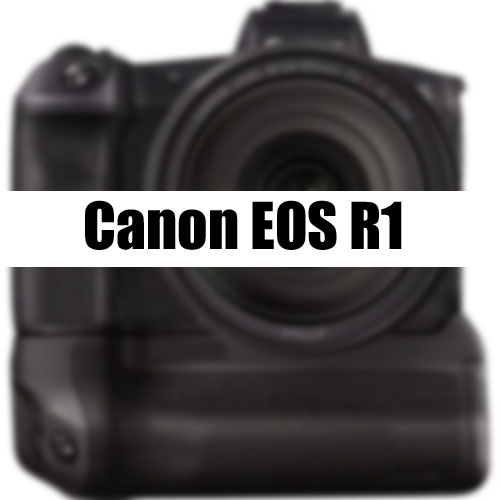
According to latest rumors coming from Rumor mills after the announcement of Nikon Z9 as well as Sony Alpha A1 camera. Canon will also announce their flagship fullframe Mirrorless camera, the Canon EOS R1. Possible set of specification we may see in the upcoming Canon EOS R5 camera
Canon EOS R1 expectation
- Newly developed 45-50MP Stacked CMOS Sensor
- Both Global and Mech. Shutter
- Advance heat sink unit
- 30 FPS RAW / JPEG
- 80 @ 60 FPS
- 8 Stops of IBIS
We these are the set of possible specs we are expecting from the upcoming Canon EOS R1. Camera, let’s hope and expect we will its development announcement soon.
Get LIVE RUMORS –> FACEBOOK | TWITTER | INSTAGRAM to get live news + Canon rumors 24X7
Source CR
By admin, on October 28th, 2021
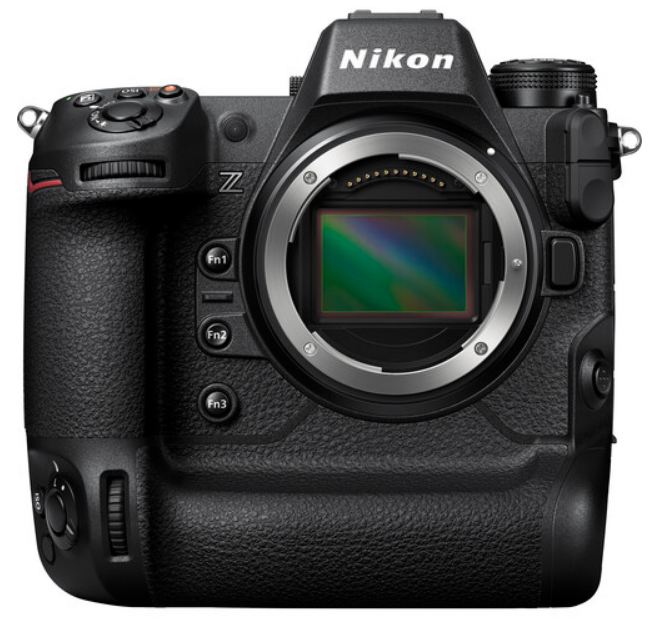
Nikon today finally announced the Nikon Z9 camera. . The latest Nikon flagship camera features a Nikon-developed 45.7 megapixel stacked CMOS sensor and next generation EXPEED 7 image processing engine, the camera is also capable to record in-camera 8K video recordings for extended periods along with a future promise that upcoming Nikon Z9 firmware updates will allow this camera to record 12-bit Raw 8K/60 capture. The world’s longest record time 7 at 8K UHD 30p for more than 2 hours.
Nikon Z9 Camera at B&H Store
Nikon Z9 Major Features
- 45.7MP FX-Format Stacked BSI CMOS Sensor
- EXPEED 7 Image Processor
- 493-Point Phase-Detection AF with Intelligent Subject Detection
- 20 fps Shooting in Raw, 30 fps Shooting in JPEG, 120 fps Shooting at 11MP
- Up to 8K30p and 4K120p Video Recording
- Internal 10-Bit Recording, ProRes 422 HQ and H.265 Support
- New High-Efficiency Raw File Format
- Blackout-Free EVF and Four-Axis Tilting LCD Touchscreen
- Integrated Vertical Grip, Dual CFexpress Type B Card Slots
- Built-In 5 GHz Wi-Fi, Bluetooth, and GNSS
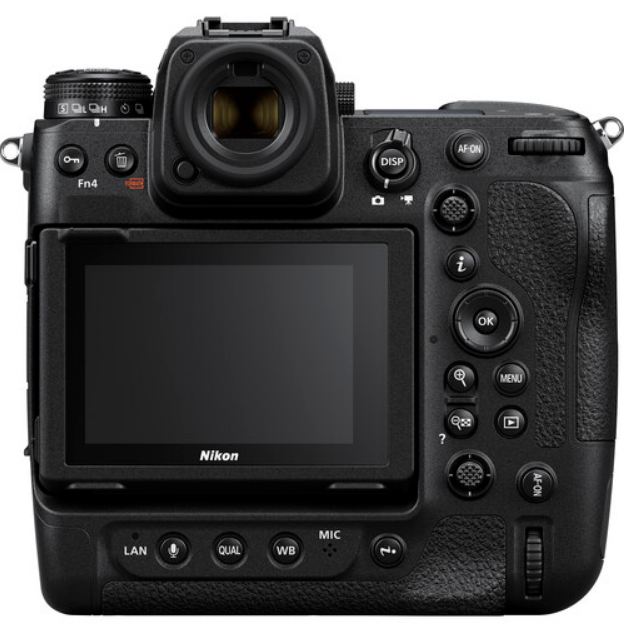
The Z9 gains two new Raw options: HE* and HE, which are ‘high efficiency’ lossy compression formats that are around 1/2 and 1/3rd the size of the uncompressed data, respectively. For extreme speed, High Speed Frame Capture enables up to 120 fps with full AF/AE at a very manageable file size of 11 megapixels, freezing a moment that cannot even be seen with the naked eye (higher resolution than 4K video).
Vibration Reduction image stabilization has been enhanced with new Synchro VR to achieve up to 6 stops of compensation with compatible lenses.. Although the resolution is low (3.68MP) but we will be getting a truly blackout-free Real-Live visibility in the viewfinder and a sensor scan rate so fast.
The Nikon Z9 will be available by the end of 2021 at a recommended price of $5,499 USD.
Nikon Z9 Full Specification PDF
Lenses announced Along with the Nikon Z9 Camera
- NIKKOR Z 100-400mm f/4.5-5.6 VR S Lens B&H Store Offering super-telephoto reach in a portable design, the NIKKOR Z 100-400mm f/4.5-5.6 VR S, from Nikon, is a versatile zoom well-suited for sports and wildlife applications.
- NIKKOR Z 24-120mm f/4 S Lens NIKKOR Z 24-120mm f/4 S, from Nikon, is a wide-angle to short-telephoto zoom lens. Features F4 maximum aperture offers consistent performance throughout the zoom range and the lens features an advanced optical design for high sharpness and clarity
- Nikon FTZ II the same functionality as the original FTZ but with a sleeker design to suit its use on cameras featuring a battery grip. This adapter removes the tripod mount and has a reduced overall size for more comfort when shooting with cameras with a built-in or attached grip or wireless transmitter.
Nikon Z9 Press Release
THE NIKON Z 9: UNSTOPPABLE PERFORMANCE, REVOLUTIONARY INNOVATION
Nikon’s First Mirrorless Flagship Defies Conventional, Debuts with a Series of Industry-Firsts for Still & Video Creators
MELVILLE, NY (October 28, 2021) – Today, Nikon announced the Z 9, the most advanced Z series mirrorless camera to date. Powered by a completely new, Nikon-developed 45.7 megapixel stacked CMOS sensor and next generation EXPEED 7 image processing engine, the full-frame Z 9 renders ultra-high resolution images and offers unparalleled AF performance using a revolutionary new scene detection system built on deep learning technology. Additionally, the camera is capable of sustained fast continuous shooting bursts, in-camera 8K video recordings for extended periods, truly blackout-free Real-Live visibility in the viewfinder and a sensor scan rate so fast that it completely eliminates the need for a traditional mechanical shutter.
“The Z 9 is the complete package, offering an unprecedented balance of speed, resolution, reliability and performance that will exceed expectations for any type of shoot, including fast action sports, commercial fashion, low light, landscapes and more,” said Jay Vannatter, Executive Vice President, Nikon Inc. “The Z 9 looks to the future, with innovations and features that give all types of imaging professionals and content creators the advantage when it matters most and the confidence to create in nearly any conditions.”
A New Kind of Pro Mirrorless
At the core of the Z 9 is the Nikon-developed 45.7MP BSI stacked CMOS sensor, coupled with the new EXPEED 7, Nikon’s most powerful engine yet, which is approximately 10x faster than the Z 7II. This combination brings significant increases in AF speed, burst rate, buffer capacity, video resolution and so much more. The Z 9 is the camera that can be trusted on the sidelines, in the field or in the studio, with the high-speed capture capability needed for the fastest action and the immense resolution to reveal the most subtle details.
With the world’s fastest1 image scan rate, the Z 9 achieves the world’s smallest2 rolling shutter distortion, equaling that of a mechanical shutter. This means actions like a fast-moving golf swing that would typically distort the club can be captured confidently with the electronic shutter, even at 1/32,000 second. It also allows users to shoot massive quantities of silent frames without worrying about shutter wear or breakdown.
The Z 9 achieves fast and accurate AF calculations at up to 120 cycles per second, even between frames during continuous shooting.
Beyond the benefits of high-speed performance, the high resolution 45.7-megapixel sensor delivers immense resolution with exquisite colors, broad dynamic range and stellar low light performance, with a native ISO Range from 64-25,600 (Expandable from 32 to 102,400 ISO).
Rely on the Fastest, Most Intelligent AF System Yet
The Z 9 features Nikon’s fastest, most sophisticated and reliable AF tracking performance ever, utilizing a new Subject Detection algorithm developed with deep learning technology, as well as 3D-tracking.
The camera’s Subject Detection capability detects the world’s largest range1 of nine subject types including humans, pets, birds, airplanes, trains, cars, motorbikes and bicycles. When in Auto-Area AF, any of these subjects will automatically be detected and focused on, without the need to change settings.
With Eye-Detection AF, the camera can detect and focus on a subject’s eye more effectively than ever, even when eyes are smaller or further away. Additionally, a custom function will now also let users change the color of the focus point to green to confirm focus.
The highly praised 3D-tracking mode from Nikon DSLRs debuts for the first time in a mirrorless camera. It is now coupled with subject detection to track fast and erratically moving subjects such as a racing car that approaches close and then moves away quickly, or a swiftly moving athlete.
The Z 9 also brings more flexibility by offering three Dynamic-area AF modes with a new range of focus-area sizes (S/M/L) for capturing a wider variety of moving subjects throughout the frame.
The AF system is faster than ever, taking advantage of the Z mount’s high-speed communication capabilities with frame-by-frame sharing of distance information.
Unstoppable Performance and Speed
This is the fastest, most powerful Nikon flagship ever. Users can capture amazing images at unbelievably fast burst speeds, all with full AF/AE performance. Whether shooting full-resolution fashion or delivering a sports sequence when a split-second matters, the Z 9 is the versatile solution.
For the ultimate combination of speed and intense image quality, photographers can shoot 20-fps RAW images with an unprecedented 1000+ image buffer.3
When a balance of quality and burst rate is needed, never miss a vital moment with 30 fps full resolution JPEG capture.
For extreme speed, High Speed Frame Capture+4 enables up to 120 fps with full AF/AE at a very manageable file size of 11 megapixels, freezing a moment that cannot even be seen with the naked eye (higher resolution than 4K video).
Truly blackout-free shooting is possible thanks to Dual-Stream technology which simultaneously feeds information to the Real-Live viewfinder/LCD and memory card, resulting in reliable confirmation of a subject’s movement without skipping or repeating frames in the viewfinder5.
The Z 9 introduces High Efficiency RAW, which retains the same level of high image quality as the conventional uncompressed RAW in an approximately 1/3 smaller6 file size, making RAW files easier to handle than ever.
Speeds of up to 1/32,000 are possible with the electronic shutter, expanding the opportunities to use fast lenses, letting photographers shoot wide open in brighter light, even at f/0.95.
Nikon’s Most Capable 8K UHD Video Camera
The Z 9 offers an extensive suite of advanced video features to elevate any kind of production. Combined with the astonishing resolving power of NIKKOR Z S-Line lenses, video is rendered with absolute clarity and sharpness from edge to edge.
Supports a variety of frame rates and resolutions, including in-camera recording at 8K UHD 24p/30p and 4K UHD 24p/30p/60p/120p (FX-format).
The world’s longest record time 7 at 8K UHD 30p for more than 2 hours consecutively (up to approximately 125 minutes)8.
For more latitude when color grading in post, tone mode profile options are available in-camera, including 10-bit N-Log and HLG (Hybrid Log-Gamma9), as well as the Flat color profile.
Supports multiple codecs including H.265 (HEVC), ProRes 422 HQ10, H.264/MPEG-4 AVC for a variety of production workflows.
Users can create 33MP/8MP frame grabs in camera from 8K /4K videos.
Full-size HDMI connection, with output latency significantly reduced.
High-resolution 24-bit linear PCM audio allows for cleaner sound quality with greater range.
A free firmware upgrade in 2022 will enable internal 8K 60p capture in the new 12-bit N-RAW high efficiency video format, 12-bit ProRes RAW and other pro level video features.
Built for the Toughest Assignments
The rugged body of the Z 9 is optimized for a professional workflow, thoughtfully engineered for a superb balance of reliability and usability. The body features an integrated vertical grip and controls, while the durable magnesium alloy chassis has drip and dust-resistance equivalent to the D6, yet is 20% smaller than its DSLR counterpart.
The new four-axis 2” touchscreen LCD frees the monitor to tilt both horizontally and vertically for shooting at any angle in any orientation. The interface will also adjust automatically to the appropriate orientation while shooting stills.
For better visibility through the viewfinder in bright sunlight, the Z 9 is equipped with the world’s brightest Quad-VGA panel adjustable to 3000cd/m2 (nits)1, revealing the most subtle details in the shadows.
Vibration Reduction image stabilization has been enhanced with new Synchro VR to achieve up to 6 stops of compensation with compatible lenses. 11
For powerful dust prevention, the Z 9 includes the world’s first1 dual coating on the optical filter with an electro-conductive coating and fluorine coating to repel dust in front of the sensor, in addition to a sensor shield that protects the sensor when changing lenses.
VR safety lock protects the sensor from the risk of damage caused by unintentional movement when the camera’s power is off while in a bag or during bumpy off-road travel.
For work in low light, the new “starlight” mode enhances the camera’s ability to focus down to a faint -8.5 EV, while illuminated buttons help astrophotographers and event or concert photographers change settings in the dark.
Adjustable shutter release volume, which can be totally silent in sensitive situations or serve as an audible cue for a subject.
New network options are organized under a new menu tab for fast access and include; in-camera Bluetooth and WiFi (2.4/5Ghz), 1000BASE-T wired LAN connection, direct transfer to FTP without the need for a wireless accessory, multiple camera sync and built-in GNSS GPS for precise location data.
New Nikon Software
The Ecosystem for the Nikon Z series continues to expand. Nikon has also released two new software solutions for professional image capture and workflow.
NX Mobile Air
NX Mobile Air is a smart device app for managing and transferring images when working in the field. The new app will be compatible with many of the most current Nikon cameras, and will allow users to have a wired connection to their phone or device from the camera for fast wireless image transfer to an FTP server over a 5G cellular signal. Additionally, the app will support the transmission of IPTC, voice memos and more. The app will be available either as a free version or as a subscription for $5/month with enhanced capabilities. For additional details and device compatibility please visit https://www.nikonusa.com/en/Nikon-Products/Imaging-Software/nx-mobileair.page.
NX Tether
Nikon NX Tether is free software to enable tethering of Nikon cameras to instantly display captured content on a computer monitor. This software is an easy way for commercial, food or studio photographers to visualize their output for client review in real time. The software will work via USB or wirelessly, and will collaborate seamlessly with the current suite of Nikon software including NX Studio. For more information, please visit https://www.nikonusa.com/en/Nikon-Products/Imaging-Software/nx-tether.page.
Pricing and Availability
The new Nikon Z 9 full-frame mirrorless camera will be available within this year (US) for a suggested retail price (SRP) of $5499.95*. For more information about the latest Nikon products, including the new Z 9, NIKKOR Z lenses and the entire collection of Nikon Z series cameras, please visit nikonusa.com.
|
KEEP THIS BLOG ALIVE - Support New Camera Buy Canon Lenses, Buy Music CD or Digital Camera at amazon it helps this site, and you do not pay anything extra, it is just a way to help support this site.

|
























